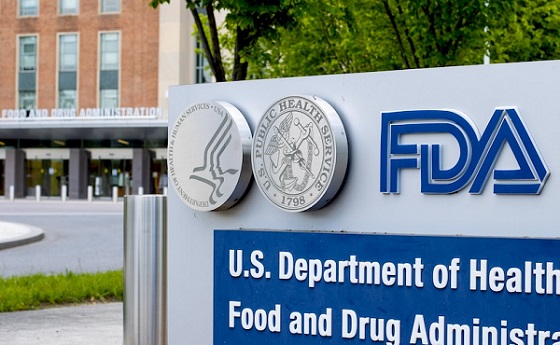Health
UK report debunks claim that halting puberty blockers increases suicide in gender-confused youth

From LifeSiteNews
For more than a decade, the transgender movement has used a potent lie to blackmail desperate parents and feckless politicians into accepting their agenda: that if gender-confused children are not provided with sex changes – “gender-affirming care” – they will be at a high risk for suicide. Parent after parent heard the simple, deceitful question, posed to them by trans activist medical professionals: “Would you rather have a dead daughter, or a live son?”
Yet another review highlights that this claim is completely baseless. As the BBC reported on July 20: “There is no evidence of a large rise in suicides in young patients attending a gender identity clinic in London, an independent review has found.”
The report, titled “Review of suicides and gender dysphoria at the Tavistock and Portman NHS Foundation Trust: independent report,” was published by the U.K. government on July 19. Professor Louis Appleby was tasked by Health Secretary Wes Streeting to examine the evidence after LGBT activists claimed that suicide rates were spiking due to restrictions on puberty blockers, which were first implemented in 2020. The review concluded:
- The data do not support the claim that there has been a large rise in suicide in young gender dysphoria patients at the Tavistock.
- The way that this issue has been discussed on social media has been insensitive, distressing and dangerous, and goes against guidance on safe reporting of suicide.
- The claims that have been placed in the public domain do not meet basic standards for statistical evidence.
- There is a need to move away from the perception that puberty-blocking drugs are the main marker of non-judgemental acceptance in this area of health care.
- We need to ensure high quality data in which everyone has confidence, as the basis of improved safety for this at risk group of young people.
This review is devastating to virtually every single claim trans activists have been making – and Appleby even notes, in point two of his summary, that trans activists themselves are posing a real danger to gender-confused children with their irresponsible lies about suicidality. Suicide, as we have long known, is a social contagion – and trans activists are explicitly encouraging gender-confused children to claim suicidal ideation in order to acquire puberty blockers.
As the BBC reported: “The Department of Health and Social Care (DHSC) said it was vital that public discussion around the issue was handled responsibly.” It is difficult to read that statement as anything but a direct rebuke of trans activists. Appleby, a professor of psychiatry and experienced suicide researcher from the University of Manchester, warned that trans activist rhetoric could actually lead to adolescents copycatting that behavior. “One risk is that young people and their families will be terrified by predictions of suicide as inevitable without puberty blockers – some of the responses on social media show this,” he said. As the BBC noted:
In response to [trans activist] claims, the new health secretary launched an independent review led by Prof Appleby which analysed data from NHS England on suicides of patients at the Tavistock clinic, based on an audit at the trust.
Covering the period between 2018-19 and 2023-24, he found there were 12 suicides – five in the three years leading up to 2020-21 and seven in the three years afterwards.
‘This is essentially no difference,’ Prof Appleby says in his report, ‘taking account of expected fluctuations in small numbers, and would not reach statistical significance.’
He adds: ‘In the under 18s specifically, there were 3 suicides before and 3 after 2020-21.’
The Good Law Project, run by executive director Jo Maugham, is currently challenging the puberty blocker ban – and predictably, Maugham expressed his disagreement with the review, saying that he had “profound difficulties” with it. It likely will make little difference. In the U.K., the transgender narrative is in tatters – and leaders still parroting these debunked lines should take note.
Health
FDA warns ‘breast binder’ manufacturers to stop marketing to gender-confused girls

From LifeSiteNews
Dr. Marty Makary took aim at the transgender-medical-industrial complex that has exploded in recent years during a recent press conference.
Food and Drug Administration (FDA) commissioner Dr. Marty Makary has sternly warned companies manufacturing “breast binders” to cease marketing and supplying their product to gender-confused girls seeking to make their bodies appear masculine.
“Today the FDA is taking action,” said Makary in a press conference. “We are sending warning letters to 12 manufacturers and retailers for illegal marketing of breast binders for children, for the purposes of treating gender dysphoria.”
“Breast binders are a class one medical device with legitimate medical users, such as being used by women after breast cancer surgery,” but “these binders are not benign,” he cautioned. “Long-term usage has been associated with pain, compromised lung function, and even difficulty breast feeding later in life.”
“The warning letters will formally notify the companies of their significant regulatory violations and require prompt corrective action,” said the FDA head.
.@DrMakaryFDA: “Today the FDA is taking action. We are sending warning letters to 12 manufacturers and retailers for illegal marketing of breast binders for children, for the purposes of treating gender dysphoria.” pic.twitter.com/6JNAy36223
— HHS Rapid Response (@HHSResponse) December 18, 2025
The warning letter addressed to California manufacturer, GenderBender, notes that the company’s website states that “[c]hest binding is the practice of compressing breast mass into a more masculine shape, often done in the LGBTQ community for gender euphoria.”
“Your firm should take prompt action to address any violations identified in this letter. Failure to adequately address this matter may result in regulatory action being initiated by the FDA without further notice. These actions include, but are not limited to, seizure and injunction,” advised the FDA.
During his presentation, Makary took aim at the transgender-medical-industrial complex that has exploded in recent years.
“One of the most barbaric features of a society is the genital mutilation of its children,” observed Makary.
“Pushing transgender ideology in children is predatory, it’s wrong, and it needs to stop,” he declared.
“This ideology is a belief system that some teachers, some pediatricians, and others are selling to children without their parents knowing sometimes, or with a deliberate attempt to remove parents from the decision making,” Makary explained.
To witness society “putting kids on a path of chest binders, drugs, castration, mastectomies, and other procedures is a path that now many kids regret,” he lamented, as he pointed to Chloe Cole, who has reverted to her God-given femininity after undergoing so-called “gender-affirming” surgery as a teen.
Cole is a leading voice for young people who have “detransitioned” after having medically, surgically, and socially attempted to “transition” to a member of the opposite sex.
.@DrMakaryFDA: “Pushing transgender ideology in children is predatory, it's wrong, and it needs to stop.” pic.twitter.com/TXxWNEtNZk
— HHS Rapid Response (@HHSResponse) December 18, 2025
Health
All 12 Vaccinated vs. Unvaccinated Studies Found the Same Thing: Unvaccinated Children Are Far Healthier

I joined Del Bigtree in studio on The HighWire to discuss what the data now make unavoidable: the CDC’s 81-dose hyper-vaccination schedule is driving the modern epidemics of chronic disease and autism.
This was not a philosophical debate or a clash of opinions. We walked through irrefutable, peer-reviewed evidence showing that whenever vaccinated and unvaccinated children are compared directly, the unvaccinated group is far healthier—every single time.
Reanalyzing the Largest Vaccinated vs. Unvaccinated Birth-Cohort Study Ever Conducted
At the center of our discussion was our peer-reviewed reanalysis of the Henry Ford Health System vaccinated vs. unvaccinated birth-cohort study (Lamerato et al.)—the largest and most rigorous comparison of its kind ever conducted.
|
The original authors relied heavily on Cox proportional hazards models, a time-adjusted approach that can soften absolute disease burden. Even so, nearly all chronic disease outcomes were higher in vaccinated children.
Our reanalysis used direct proportional comparisons, stripping away the smoothing and revealing the full magnitude of the signal.
- All 22 chronic disease categories favored the unvaccinated cohort when proportional disease burden was examined
- Cancer incidence was 54% higher in vaccinated children (0.0102 vs. 0.0066)
- When autism-associated conditions were grouped appropriately—including autism, ADHD, developmental delay, learning disability, speech disorder, neurologic impairment, seizures, and related diagnoses—the vaccinated cohort showed a 549% higher odds of autism-spectrum–associated clinical outcomes
The findings are internally consistent, biologically coherent, and concordant with every prior vaccinated vs. unvaccinated study, all of which show drastically poorer health outcomes among vaccinated children
The 12 Vaccinated vs. Unvaccinated Studies Regulators Ignore
In the McCullough Foundation Autism Report, we compiled all 12 vaccinated vs. unvaccinated pediatric studies currently available. These studies span different populations, countries, study designs, and data sources.
Every single one reports the same overall pattern. Across all 12 studies, unvaccinated children consistently exhibit substantially lower rates of chronic disease, including:
- Autism and other neurodevelopmental disorders
- ADHD, tics, learning and speech disorders
- Asthma, allergies, eczema, and autoimmune conditions
- Chronic ear infections, skin disorders, and gastrointestinal illness
This level of consistency across independent datasets is precisely what epidemiology looks for when assessing causality. It also explains why no federal agency has ever conducted—or endorsed—a fully vaccinated vs. fully unvaccinated safety study.
Flu Shot Failure
We also addressed the persistent failure of seasonal influenza vaccination.
A large Cleveland Clinic cohort study of 53,402 employees followed participants during the 2024–2025 respiratory viral season and found:
- 82.1% of employees were vaccinated against influenza
- Vaccinated individuals had a 27% higher adjusted risk of influenza compared with the unvaccinated state (HR 1.27; 95% CI 1.07–1.51; p = 0.007)
- This corresponded to a negative vaccine effectiveness of −26.9% (95% CI −55.0 to −6.6%), meaning vaccination was associated with increased—not reduced—risk of influenza
When vaccination exposure increases, chronic disease, neurodevelopmental disorders, and inflammatory illness increase with it. When children are unvaccinated, they are measurably healthier across virtually every outcome that matters.
The science needed to confront the chronic disease and autism epidemics already exists. What remains is the willingness to acknowledge it.
Epidemiologist and Foundation Administrator, McCullough Foundation
Support our mission: mcculloughfnd.org
Please consider following both the McCullough Foundation and my personal account on X (formerly Twitter) for further content.
FOCAL POINTS (Courageous Discourse) is a reader-supported publication.
To receive new posts and support my work, consider becoming a free or paid subscriber.
-

 Censorship Industrial Complex1 day ago
Censorship Industrial Complex1 day agoDeath by a thousand clicks – government censorship of Canada’s internet
-

 Daily Caller1 day ago
Daily Caller1 day agoChinese Billionaire Tried To Build US-Born Baby Empire As Overseas Elites Turn To American Surrogates
-

 Great Reset1 day ago
Great Reset1 day agoViral TikTok video shows 7-year-old cuddling great-grandfather before he’s euthanized
-

 Automotive1 day ago
Automotive1 day agoPoliticians should be honest about environmental pros and cons of electric vehicles
-

 Digital ID23 hours ago
Digital ID23 hours agoCanada releases new digital ID app for personal documents despite privacy concerns
-

 Alberta1 day ago
Alberta1 day agoSchools should go back to basics to mitigate effects of AI
-

 Community20 hours ago
Community20 hours agoCharitable giving on the decline in Canada
-

 Bruce Dowbiggin22 hours ago
Bruce Dowbiggin22 hours agoNFL Ice Bowls Turn Down The Thermostat on Climate Change Hysteria








